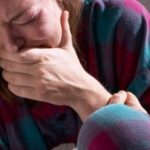 Post-traumatic stress disorder, or PTSD, an anxiety disorder, is often associated with those who have gone to war. PTSD happens after people have experienced traumatic events and continue to recall stressors.
Post-traumatic stress disorder, or PTSD, an anxiety disorder, is often associated with those who have gone to war. PTSD happens after people have experienced traumatic events and continue to recall stressors.
Symptoms of PTSD can come in the form of nightmares, flashbacks, difficulty sleeping, and feelings of detachment. Since PTSD is most commonly associated with soldiers returning from war, it’s often overlooked that women experience PTSD twice as much as men.
PTSD differences in men and women
Advertisement
Although men and women experience many similar symptoms of PTSD, there are some important differences as well. These differences are mainly due to the difference in causes.
Women are more likely to be jumpy, have difficulty experiencing emotions and avoid situations or scenarios that may remind them of their traumatic experience. Men, on the other hand, are often angry and have great difficulty controlling their anger. Women are more likely to experience depression, while men are more likely to abuse alcohol or drugs.
One thing both men and women with PTSD have in common is that they both experience negative health outcomes.
PTSD may raise odds of heart attack, stroke in women
What they uncovered through analysis of data was that women who showed four or more symptoms of PTSD were 60 percent more likely to have cardiovascular disease. This was in comparison to women who never experienced a traumatic event. Women with no symptoms of PTSD, but who reported experiencing traumatic events, also had a greater risk of cardiovascular disease.
Researchers tied the risk of cardiovascular disease in women with symptoms of PTSD to the fact that these women took part in unhealthy behaviors. This included having high blood pressure, smoking and minimal physical activity.
Researchers feel that their research reveals a clear link between mind and body. They propose doctors begin to treat the mind and body as one and not separate.
Why do women have a higher risk of PTSD?
Although men experience traumatic events more often than women, research finds women are still more likely to suffer from PTSD. But why? To understand why rates of PTSD are higher among women, it’s important to understand the type of trauma men and women face.
In a review of 290 studies spanning 25 years of research, officials at the University of Pennsylvania’s School of Medicine, found that men experience trauma in the form of witnessing death, experiencing accidents and nonsexual assaults. But women experience higher rates of sexual assaults. The researchers said PTSD is a result of sexual assault, and the emotional damage wrought on women.
Researchers then analyzed the data further and removed sexual assault as a factor. They still found women were more likely to develop PTSD. Researchers concluded that women get diagnosed more often based on the criteria of diagnosis – emotional and cognitive responses to trauma. While the rate of men who suffer from PTSD is lower due to how they react to emotional trauma.
Advertisement
It’s important for us to recognize how to treat the mind and body as one, just as the researchers suggest. PTSD can have lasting effects, especially with the research linking it to cardiovascular disease. By becoming more aware of this mental health disorder we can make better forms of treatment and help PTSD sufferers recover.
Living and coping with PTSD
Living and coping with PTSD can be challenging, but it is possible by following these helpful tips.
- Follow your treatment plan.
- Educate yourself about PTSD so you can better understand your symptoms and experiences.
- Don’t self-medicate with prescription or over-the-counter drugs or alcohol and illegal drugs.
- Break the cycle – when you feel negative emotions remove yourself form the situation to clear your head.
- Talk to someone – whether you seek out a therapist, doctor or even support group members, talking can often be helpful.
Although the traumatic event a person experienced cannot be removed from their memory, they can find ways to return to their normal lives and overcome the stress and trauma.
